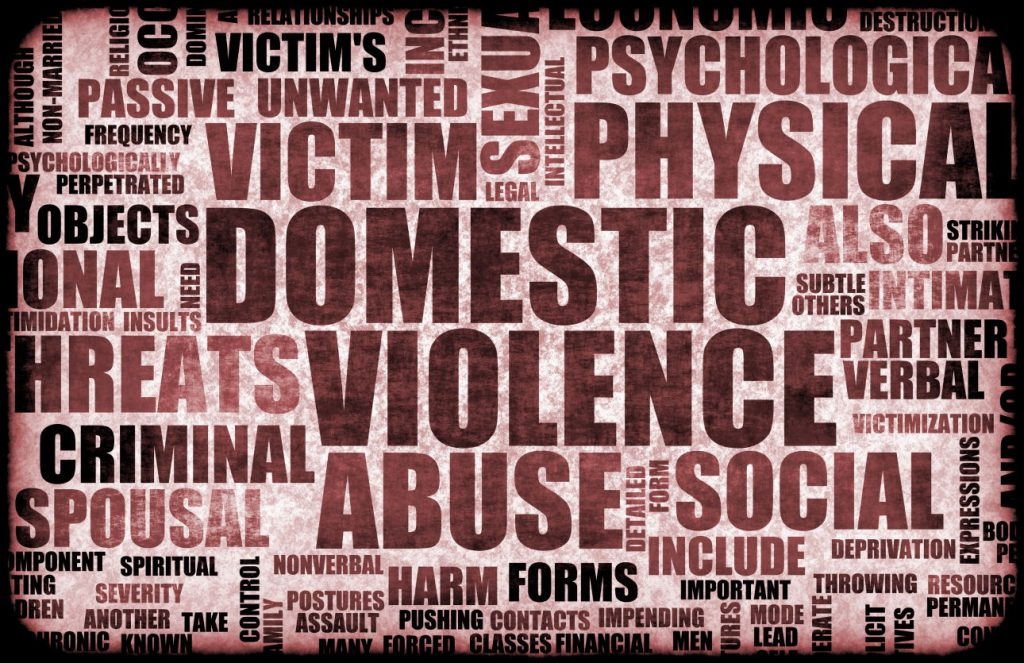As an employer, it is your duty of care to create a safe and supportive workplace for your employees. Unfortunately, domestic violence (DV) and coercive control are becoming all too common in society and must be addressed by employers to ensure the safety and wellbeing of their employees. This guide will discuss the importance of recognising the signs of domestic violence and coercive control, risk assessment in the workplace, developing effective procedures for responding to domestic violence and coercive control cases, as well as setting up a supportive work culture for employees who are, or may be, affected by domestic violence and coercive control.
What is Domestic Violence and Coercive Control?
Domestic violence and coercive control are serious forms of abuse that can profoundly impact an employee’s mental and physical health, work performance, and well-being. Employers have a duty of care to their employees, which includes recognising and appropriately responding to domestic violence and coercive control.
Domestic violence is a pattern of behaviour that can take many forms, including physical and sexual abuse, psychological abuse, economic abuse, and stalking. It occurs between two people who are involved in an intimate relationship, such as a spouse, partner, or family member. Domestic violence can be a one-time incident or an ongoing pattern of behaviour.
We often imagine bruises and black eyes when we think of domestic and family violence. However, most DV cannot be seen by others. Physical and sexual violence is only one aspect of DV. The less obvious emotional, financial and psychological abuse is known as coercive control.
Coercive control is a form of domestic abuse that involves a pattern of behaviour intended to harm, punish, or frighten a partner by controlling their actions, thoughts, and feelings. This form of abuse often involves threats, intimidation, and manipulation. Coercive control can take many forms, such as isolating someone from friends and family, restricting their access to money, and restricting their freedom of movement.
It is important for employers to understand the signs of domestic violence and coercive control so they can assess the risk of harm to their employees and provide guidance and support. The signs of domestic violence and coercive control can be physical, psychological, and behavioural. Physical signs include bruises, cuts, and scars, while psychological and behavioural signs include increased absences from work, tension with colleagues, anxiety, and depression.
By being aware of the signs of domestic violence and coercive control, employers can create a supportive environment for their employees and reduce the risk of harm. Employers are also encouraged to provide employees with appropriate resources, such as legal advice and counselling, to help address the issue.
When there is an imbalance of power and control in a relationship, the more ‘powerful’ person in the relationship, if abusive, can choose to use this imbalance to impose coercive control and physical violence over the other person.
Most people who have experienced DV will say that the pattern of behaviour started with controlling behaviour such as jealousy, negative comments about clothing choices, disparaging of friends and family, monitoring phones, or tracking or surveillance behaviour.
Often the victim misinterprets these behaviours as coming from a place of love rather than recognising the inappropriate incursion of boundaries and privacy. Unfortunately, over time, this controlling behaviour can escalate to physical and sexual violence.
While domestic violence and coercive control can happen in any relationship, regardless of gender, almost all serious injuries and deaths occur with men as the perpetrator.
“1 in 4 women have experienced physical or sexual violence by a current or former partner since age 15, while for men, it is 1 in 16. 75% of victims of domestic violence reported the perpetrator as male, while 25% reported the perpetrator as female. On average, 1.5 women a week and 1 man a month is killed by a current or former partner.” (Australian Institute of Family and Welfare Statistics (2018) Family, domestic and sexual violence in Australia.)

Many people say that the ‘invisible’ aspects of coercive control are more difficult, frightening and traumatising than being physically assaulted.
The combination of these behaviours, even without physical violence, make a victim feel helpless and unable to leave or survive outside of the relationship. Victims find it very difficult to leave.
Victims of Domestic Violence and coercive control are psychologically traumatised – this means they are constantly in a state of fight/flight/freeze, and their brain is more focused on survival than anything else.
Why has this become a workplace issue?
First and foremost, there are legal obligations for employers. In October 2022, the Federal Government introduced an obligation for all employers to offer 10 days paid domestic violence leave for their employees, starting February 2023.
The Fair Work Act 2009 has been amended to include 10 days paid family and domestic violence leave in each 12-month period in the National Employment Standards. Previously the obligation was for 5 days of unpaid leave.
Domestic violence leave refers to leave taken by an employee experiencing domestic violence, or those affected by it (e.g. family members or care providers). These types of policies not only provide employees with the flexibility to access leave in difficult circumstances (including time with police, counsellors, or financial and legal services) but also show that the employer is taking a proactive stance in supporting impacted employees.
- Full-time, part-time and casual employees will be able to access 10 days of paid family, and domestic violence leave in a 12-month period. It won’t be pro-rated for part-time or casual employees.
- The full 10-day leave entitlement will be available upfront. It won’t accumulate from year to year if it’s not used.
- The leave will be available from:
- 1 February 2023, for employees of non-small business employers (employers with 15 or more employees on 1 February 2023)
- 1 August 2023, for employees of small business employers (employers with less than 15 employees on 1 February 2023).
(Source: Fair Work Ombudsman 2022)
Secondly, the evidence is clear that employees experiencing domestic violence or coercive control are likely to be distracted, emotionally dysregulated, and more prone to workplace accidents due to their lack of focus. Their productivity is likely to be reduced, and absences from work can become more frequent. Conflict can arise with colleagues, or they may withdraw from communicating altogether. Consequently, the financial and cultural impact on the business is often substantial.
As an Employer, what are my Obligations regarding Domestic Family Violence and Coercive Control?
Apart from the provision of paid leave, from February 2023, it is essential to have a current Domestic Violence Policy. This should include the following;
- A comprehensive definition of domestic violence and coercive control.
- What entitlements are available, what other assistance can the business offer, and how to access these.
- Who to approach for confidential help within the business – HR and senior managers should have domestic violence training to understand the complexity of concerns raised by the employee – without judgement or discrimination.
- Information to give the employee at the time of disclosure –such as the Charmed and Dangerous booklet from Legal Aid NSW, and a safety plan to consider for short-term safety.
- Ways to ensure the employee feels safe at work as well as when arriving and leaving the premises.
- Referral information: your Employee Assistance Program provider (EAP), 1800 RESPECT, women’s domestic violence and counselling services nearby.
What signs should I be looking for? How do I recognise problems with Domestic Family Violence amongst my employees?
Potential warning signs of domestic violence and coercive control in the workplace can include:
- Changes in an employee’s behaviour – such as sudden absences, being late for work, or changes in their mood or behaviour. e.g. impatience, frustration, anxiousness, being ‘on edge’, sadness, tearfulness, anger, fearfulness, exhaustion and being easily overwhelmed.
- Changes in the way an employee interacts with colleagues – for example, no longer wanting to socialise with colleagues or becoming more withdrawn or anxious.
- Changes in their work performance – such as; lack of confidence, losing belief in their abilities, and less willingness to take the initiative or voice opinions at work. It’s also common for people to struggle with focus and concentration, potentially leading to an increase in errors or mistakes. Also, more subtle signs like taking longer to respond to emails or complete work.
- Unexplained injuries or bruises – for example, wearing extra layers of clothing to cover up injuries.
- A decrease in self-care or personal hygiene – for example, wearing the same clothes for several days in a row, or looking unkempt.
- Receiving a large amount of phone calls or text messages at work – especially if it seems that the caller is trying to keep tabs on the employee’s whereabouts.
- Being fearful of talking to certain people – for example, not wanting to discuss a certain topic or being uncomfortable around a certain colleague.
- Verbal clues include talk of ‘relationship problems’, expressing shame and guilt, increased alcohol or drug use, or discussions of self-harm.
It is important to remember that these signs can also be caused by other factors, so employers should not jump to conclusions. However, they should always be aware of the warning signs of domestic violence and coercive control and be willing to provide support and assistance to employees who may be affected by it.

How do I help an Employee where there is Domestic Family Violence or Coercive Control affecting their work and life?
For employers, it is important to be aware of the prevalence of domestic violence and coercive control in the workplace and to be proactive in addressing it. To ensure that the workplace is a safe and healthy environment for everyone, employers should establish a plan of action to protect employees.
The first step is to ensure a clear understanding of the company’s duty of care. Employers must take reasonable steps to assess and manage any risk of domestic violence or coercive control. This includes adopting appropriate policies, offering accessible resources, and providing training to staff on how to identify and respond to potential signs of domestic violence.
Some employers may also choose to create specific policies and procedures designed to protect staff from domestic violence. This could include housing or relocation assistance, offering flexible work hours or other forms of support.
Additionally, employers should make sure that any employees who are victims of domestic violence or coercive control are given the appropriate time and resources to take the necessary steps to address their situation, including finding safe housing, medical support, and legal aid.
By establishing an action plan, employers can take a proactive approach to addressing issues related to domestic violence and coercive control in the workplace. This proactive approach demonstrates a commitment to protecting employees and helping to build a safe, respectful culture in the workplace.
- Have and implement a thorough and updated Domestic Violence Policy which is communicated to staff on a regular basis
- Train staff, especially HR and team leaders, about Domestic Violence and coercive control.
- Maintain a safe workplace where employees feel safe to ask for help, with zero tolerance for abuses of power or bullying behaviour.

What is best practice when an employee discloses Domestic Violence or Coercive Control?
- Following a disclosure, take the person out of the workspace for a coffee rather than an ‘interrogation’ in a meeting room. Be aware that the person will be over-sensitive to behaviour that mimics the perpetrator, so try to minimise the power differential that normally may exist in your working relationship. The person will be feeling enormous shame, guilt and self-blame. Ask how you and the organisation can help.
- Offer to listen without judgement and say that you believe the person. Reassure them about confidentiality.
- Name the situation clearly as one of Coercive Control, Domestic Abuse and/or Domestic violence. Avoid minimising the situation. Have a printout of ‘Charmed and Dangerous’ to give them.
- Ask if the employee has a safety plan – have an example of a safety plan and go through this with your employee (see below)
- Offer EAP counselling with a DV and trauma-aware counsellor
- Offer to connect the person with local services that help with Domestic Abuse, have these printed out and be prepared to make the call for the person if they need.
- Offer to help if the person wants to report an incident to the police. Do not go to police without their consent – this can result in the perpetrator becoming aggravated and more abusive, putting the person and any children at further risk. Also, it ruins the trust you want to develop.
- Offer Domestic Violence leave – some people believe this would not apply to them because they ‘have not been hit.’
- Offer financial assistance for emergency housing, a hotel for a few nights and/or to help with moving costs. Make sure the employee and any children have a safe place to stay.
- Be prepared to encounter resistance or excuses for the perpetrator and an inability to leave at the time. The aim is to help the person feel safe in their disclosure and in control of their decisions. By providing support and information, the person will be able to consider leaving and plan to do so at the safest time for themselves and their children. Until they leave, they can be safe by implementing their safety plan.
“On average, it takes a victim seven times to leave before staying away for good. Exiting the relationship is most unsafe time for a victim. As the abuser senses that they’re losing power, they will often act in dangerous ways to regain control over their victim.” (National Domestic Violence Hotline Website – USA)
Don’t judge the person for their choices or inability to decide to leave. Many women are afraid to leave a violent, controlling, and abusive relationship. They may feel like they’ve lost their supportive family and friends, financial security, a roof over their head, or even hope for a better future. It’s not uncommon for a woman to make several attempts to leave an abusive relationship. However, with each attempt, the potential becomes more real and many women do manage to get away from dangerous relationships and go on with their lives.
Here are some common reasons people feel they cannot leave an abusive relationship;
- Economic control by the perpetrator – limited resources to pay for bond, rent & bills.
- Loss of confidence in managing life and finances without the perpetrator
- Concern about children – sharing custody without being there to keep them safe from abusive behaviour
- Safety “he will never leave me alone” – between 1 and 2 women are killed by an ex-partner each week in Australia. (Female perpetrators are less likely to kill an ex-partner)
- Family or religious pressure to remain in the relationship
- Fear of not being believed and instead facing blame for causing the abuse
- Does not realise the behaviour is abusive because it’s become normalised for them. AKA ‘frog in boiling water.’
- Loyalty to the partner, love and wanting to help ‘fix’ the abusive person
Safety Plans for individuals
*The following safety plans can also be used by employers in the development of policies and procedures around domestic violence and coercive control.
Checklist: Before you leave
Leaving a violent relationship is the only reliable way to be safe; however, making that transition can be the most dangerous period.
- Act normally to avoid arousing suspicion while you decide what to do.
- Locate safe accommodation for yourself and your kids. The Domestic Violence Hotline 1800 RESPECT can assist with this.
- Take all important documents (or photocopies) to a safe place. This can be at work, friends or family.
- Have a spare set of keys and, ideally, a spare phone hidden outside of the home that you can access if you suddenly need to leave.
- Have an emergency bag packed and stored outside the home for yourself and your kids. This includes money, important documents, toiletries, clothes, and favourite toys for kids.
- Plan to take any pets to safety, find someone to take them, or at least check in on them if you are away from home. The RSPCA can help when there is domestic violence.
- Tell some trusted family, friends and/or work people so that you have support if you need to leave quickly. Organise somewhere you can stay if you need to leave. Keep the list of support services in a safe place with your other documents. e
- Ideally, plan to leave when the perpetrator is not home. It is difficult and potentially unsafe to leave mid-argument, especially with kids and pets.
- Be aware of all exit routes in your home and safe places for yourself and your kids. Is there a ‘safe’ room with a lock inside, like the bathroom? Can you hide a phone in there to get help?
- Know how to call 000 for yourself and your children, and get them to practice this.
- Ask neighbours to call the police if they hear a disturbance. Arrange for safe neighbours to run to, for yourself and your children.
- Keep a secret diary listing all incidents and dates, even if you don’t report them to the police. This can help show a pattern of behaviour and assist in getting a restraining order.
- Ask your doctor to document any injuries.
Checklist: When you leave
This is a useful list to help you prepare to leave. Your priority is keeping yourself and your kids safe. However, if it’s safe to do so, take the following items with you.
- Banks cards and driver’s licence
- Certificates of birth, marriage or death for you and your children
- Centrelink, immigration documents
- Car and house keys
- Passports for you and your children
- Car registration papers
- Medicare card, Medical records, medication
- Tax records or employment documents
- Any court documents
- Any property or real estate documents.
- Copy of Apprehended Domestic Violence Order (ADVO)
- Address book
- One or two of your children’s favourite toys.
- Personal items you want to keep safe. e.g. photos
Checklist: After Leaving
Leaving a relationship doesn’t guarantee safety because abusers may use other means to try and regain coercive control. The following are actions you can take to protect yourself.
- Contact legal services to understand your options.
- Seek support from a domestic violence support worker or counsellor
- If you need to return to your original address, ask the police to come with you.
- Change your online passwords on all key accounts, including social media. Do the same for your children.
- Open new bank accounts.
- Change your phone number, consider opting for a silent number, and turn on caller ID.
- Contact Centrelink to stop any joint correspondence.
- Ask the Australian Electoral Commission to exclude your name and contact details from the electoral role.
- Close down any other important accounts that could be used against you. Open new accounts if necessary.
- If you have an ADVO keep it with you at all times. Make a copy/copies and ask trusted friends to store them.
- If the abuser breaches the ADVO – alert the police immediately.
- Change your routines and avoid familiar locations.
- Increase home security (changing locks, security chains, sensor lights)
- Contact your children’s school or daycare to organise pickup and dropoff.
- Ask your neighbours to call the police if they hear any concerning noises or notice anything unusual.
Final Word
In conclusion, protecting employees from the risks associated with domestic violence and coercive control is a priority for any employer. By understanding the definitions, warning signs, and prevalence of abuse, employers can create a workplace environment where employees feel safe and supported. Assessing for risk in the workplace, responding appropriately to domestic violence or coercive control incidents, creating a supportive culture, and sustaining an employer-employee relationship are key components to increasing employee wellbeing.
Employers must foster an environment of trust and respect so that employees can feel comfortable talking about their experiences. By becoming informed and creating policies that support employees, employers can work to safeguard their employees and create a safe and productive workplace. Understanding the complexities of domestic violence and coercive control, and taking proactive steps to protect employees, is essential for creating a safe and supportive workplace.
About the Author: Karen Finch is one of our most in demand counsellors here at Allos Australia. She is a qualified clinical member of Psychotherapy and Counselling Federation of Australia. Her speciality is in emotional trauma and counselling victims of domestic violence, such as Wilma Women's Health Centre in Campbelltown NSW. She is also an Approved Victims Services Counsellor for Victims of Crime in NSW and worked for several years as an Emergency 000 operator.

